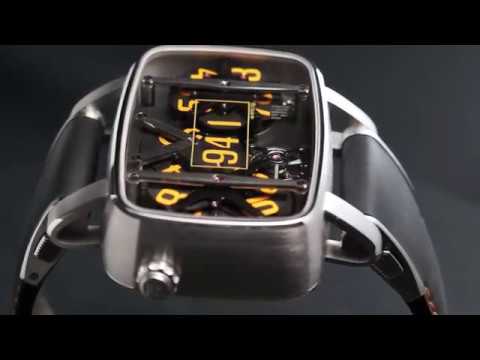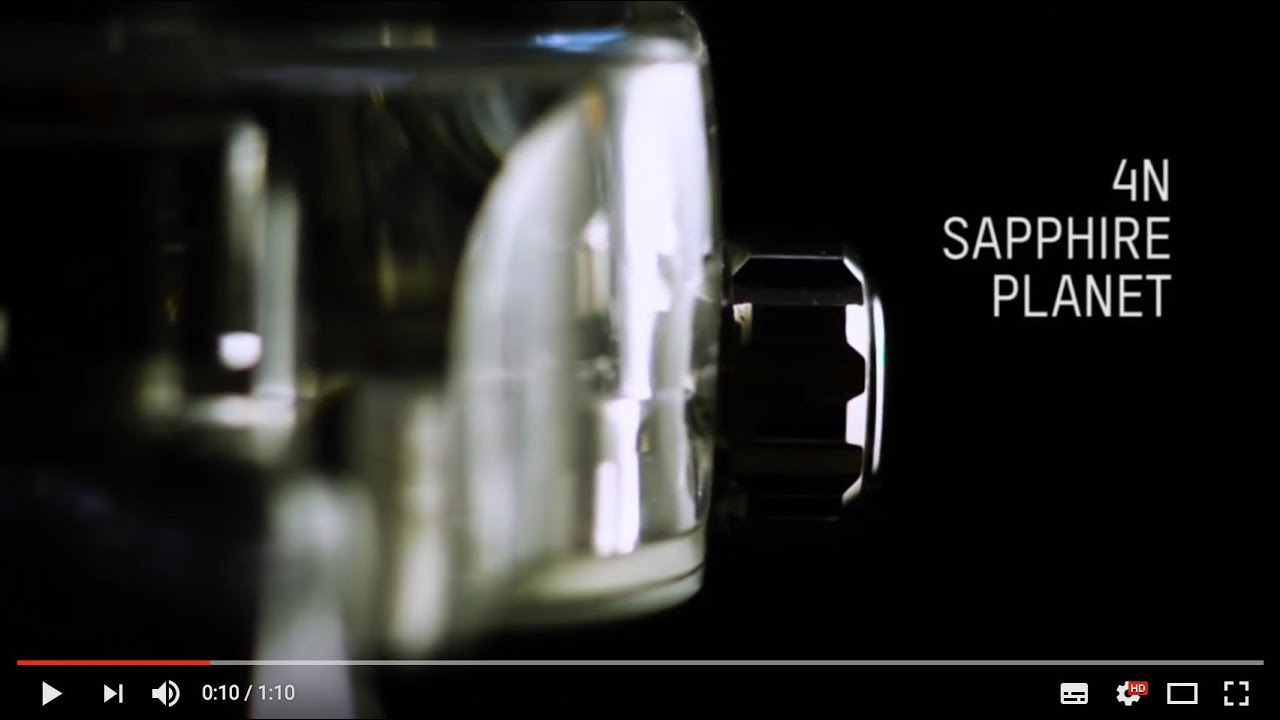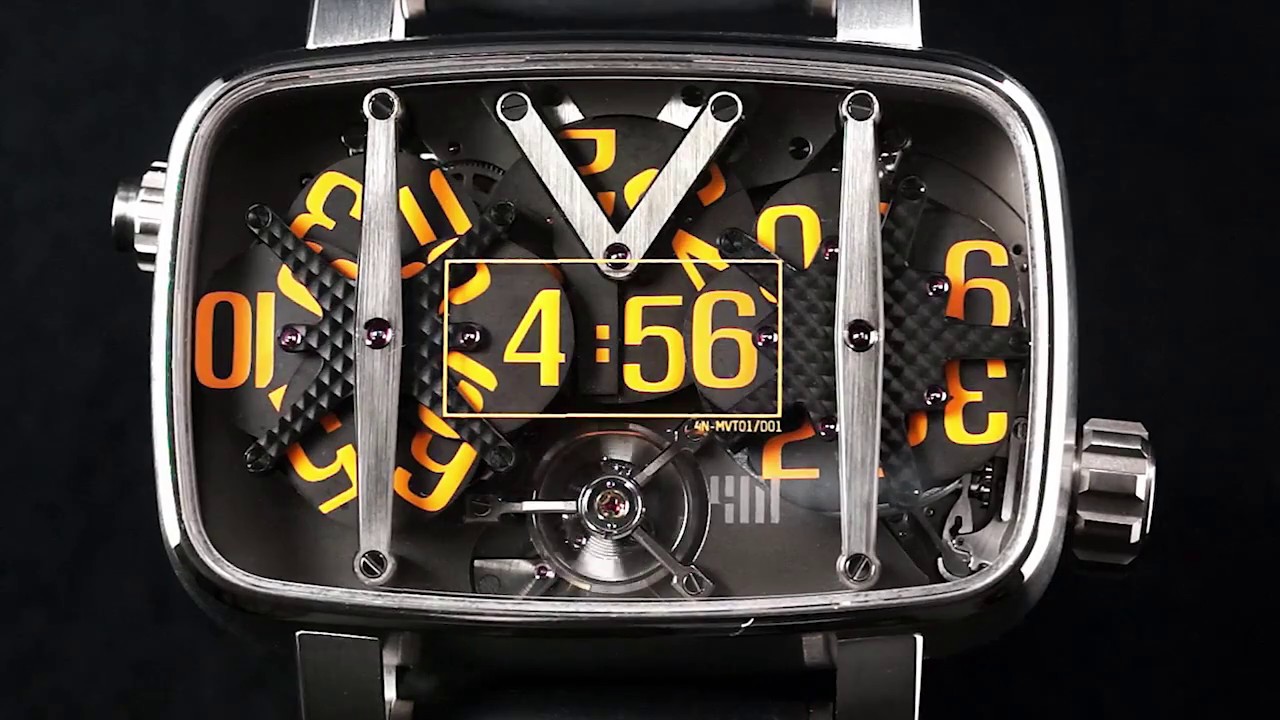The most interesting point in this watch is not the fact that this is the best and the biggest jumping system available right now but how it tells time. Jumping hours is a known complication and used by many watches in various systems but the jumping minutes is rare.
To reach the 5.5mm height of the numbers, the classic system with three discs is not usable so another system with 10 discs was developed: for the hour function were used 4 discs assembled in a cage, a single disc for tens of minutes and another cage, with five discs, for the minutes.
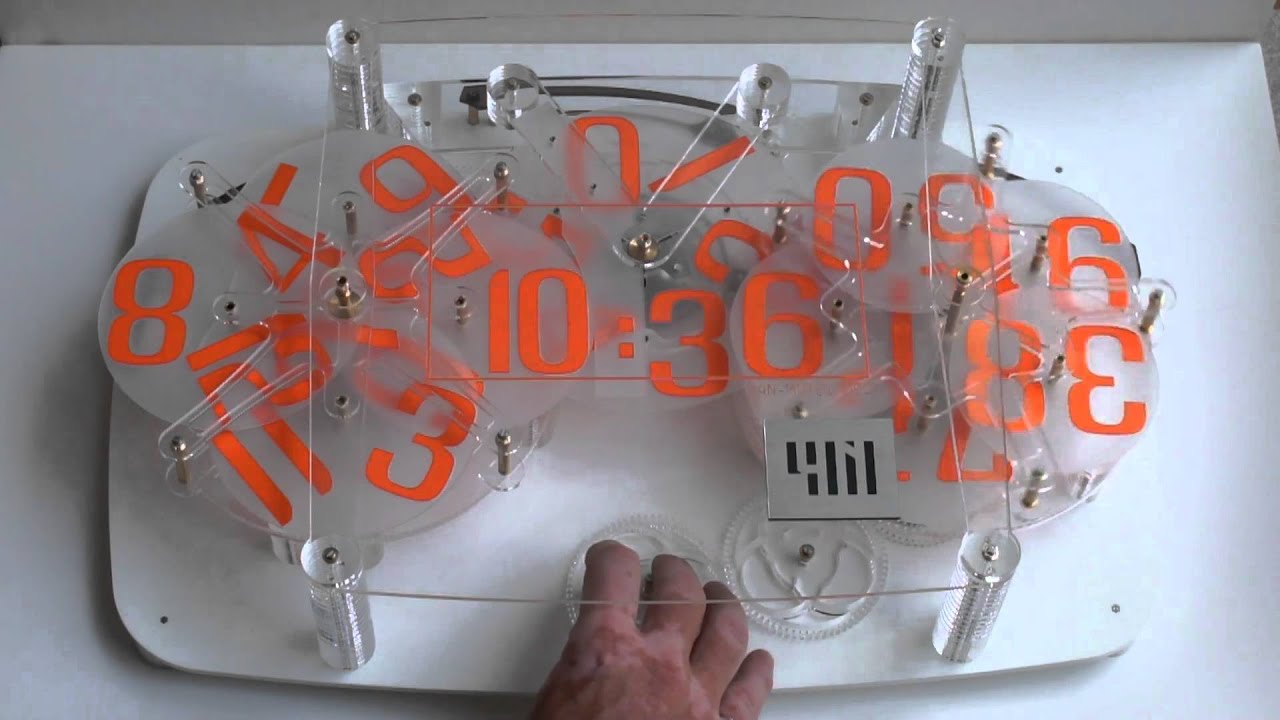
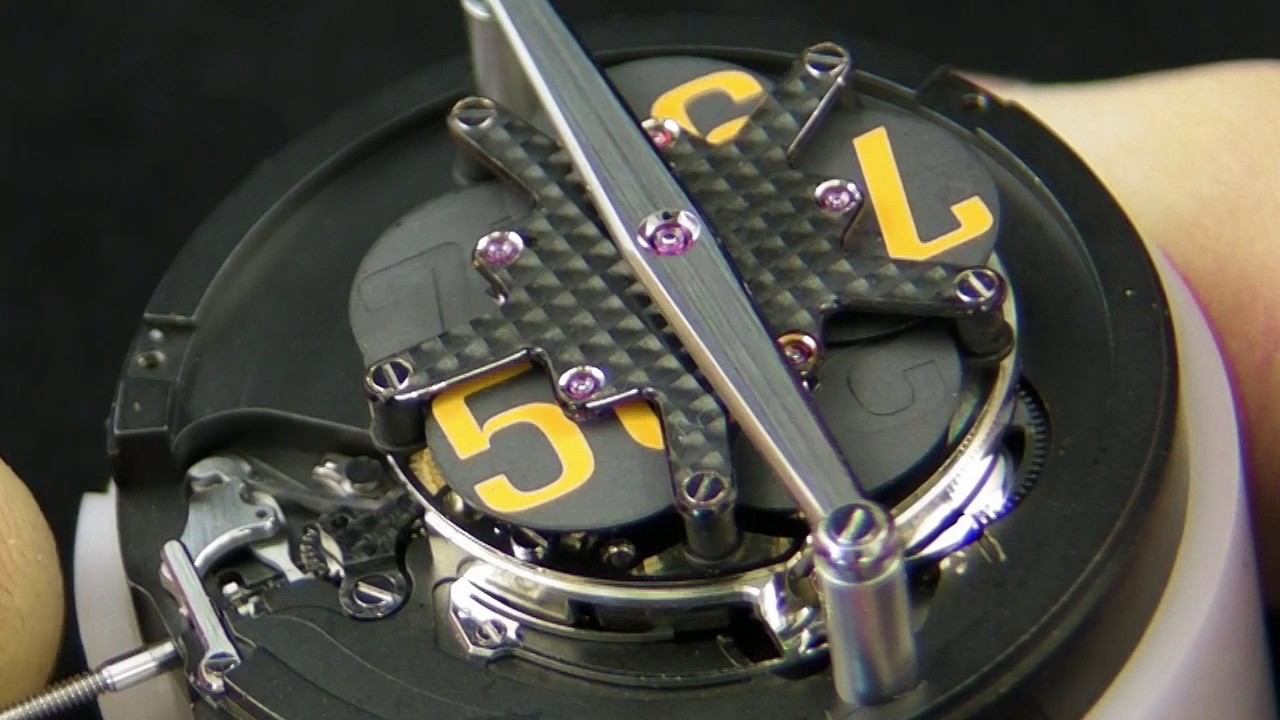
“This cinematic collection of the cage, discs and disc indexing is independent of the degree of winding of the cylinder; the same amount of energy is always used (the compression of the spring by the cage), thus allowing an optimum adjustment of the jump, however, wound it is (like a constant force). Thanks to these innovations the MVT01/D01 boasts an exceptional 237-hour fully-wound life span, which is almost 10 days, putting it way out in front of all other high-end watches with complicated displays, and all this with a spectacular animation every single minute.” – 4N Website
The 4N movement MVT01/D01 is made using 514 components and 78 jewels. These numbers are impressive and make the 4N watch one of the most complex timepieces on the market and the most complex jumping time ever.
Since two months are needed to complete one watch, only 16 pieces are available in different metal versions: gold, titanium and platinum.
